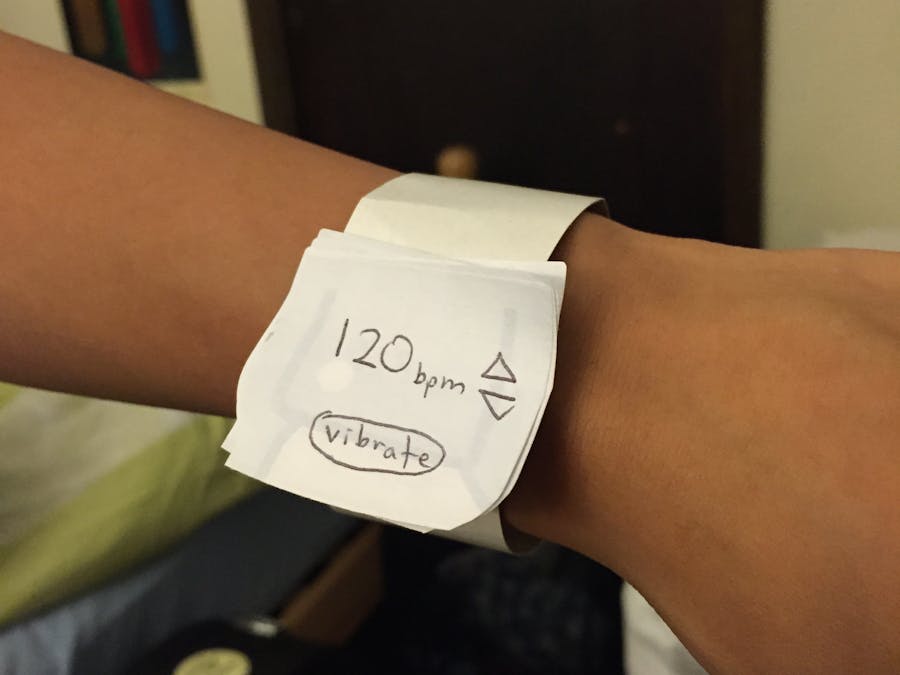I interviewed two adults to get feedback on using mobile phones and wearable technology. The first adult I interviewed was a black man in his mid-thirties. He is both an InterVarsity staff worker and a member of an R&B band. The last time he recalled not having his phone was because he ran out of battery. He wanted to respond to texts because he had sent out texts to people when his phone still had battery. He normally keeps his phone in his pocket. If he were to text using a wearable device, he imagined that it would be difficult unless he could talk to his phone. Also, he would require that the phone is connected to 4G so that he can send texts without his phone.
The second adult I interviewed was a Cambodian woman in her mid-thirties. She works as a hairdresser at World Cuts. When I asked her when she remembers not having her phone with her, she said she always has her phone with her. When walking, she normally keeps her phone in her purse. At work, she keeps her phone in the back of the hair salon. She typically uses her phone for browsing the internet and messaging people. She finds it hard to imagine using a wearable device because the screen is so small. She says she could potentially talk to a wearable device, but she wouldn't want to use it during work because it would be too distracting as she's cutting people's hair.
Both users frequently use mobile devices for messaging. While the second interviewee would not want a wearable device because it could be a distraction, the first interviewee thought it could be useful in some situations. Both users only thought of existing functionalities on mobile phones instead of thinking of completely different ways a wearable device could help them.
After interviewing the two adults, I brainstormed twelve potential ideas for mobile applications on smart watches:
1) Metronome
- simple, no subdivisions, just one sound, control bpm
- need to test whether sound or vibration is more effective
2) Tuner (for instruments)
3) Timer for cooking / baking
- can time for multiple tasks at once
- uses voice commands "remind me in 30 minutes when the cake is ready"
4) App that notifies you when communal laundry machines (like in the dorms or apartments) are available. The app can also notify you once your laundry is done.
5) App that controls the volume levels of different instruments in a live performance. It has to communicate with Logic Pro which will also be controlling the physical mixer. This will allow a perfomer to adjust monitor levels, so he can hear himself properly. Because the watch screen is too small to show multiple tracks at once, the user would have to swipe right or left to control different instruments. After selecting an instrument, the user can swipe up to increase volume.
6) App that displays a new vocabulary word to learn in a specific (e.g. Japanese, Spanish, Chinese) language every morning when you wake up.
7) Spyfall game app. Every player joins a "room." Each player is assigned a role on their watches. They ask each other questions about the location where everyone is at. Everyone but the spy knows the location. The spy has to figure out the locaion without revealing his or her identity. See game instructions here: http://www.shutupandsitdown.com/games/game/spyfall/
See web app here: http://spyfall.adrianocola.com/
8) iClicker via smartwatch for questions during lecture
9) App that lets user request customer service at a grocery store. If a user has trouble finding an item, the user can press a button to request an employee to come and direct the user to the location of the item.
10) An app that let's a user ask about timing of events. A user can ask the app, "What am I doing on Saturday at 3pm?" The watch can respond by saying or displaying the name of the event on the user's calendar if there is an event.
11) Smart home security app. Notifies user when someone has broken into home. User can immediately send a message to the police by pressing a button on the watch screen.
12) Smart watch app that controls smart TV via voice commands. The user can say to the watch "go to channel 2," "open Pandora", "search Tori Kelly on YouTube"
I decided to prototype the metronome for musicians because I think a metronome can be more effective when felt (via watch vibrations) instead of heard, and as a musician, I want to make a product that helps musicians improve their skills.
To make the prototype, I attached post-its to a strip of cardboard and drew different screens of the app on different post-its. I intended the user to use the up and down arrows to change the beats per minute of the tapping. The tapping defaults to an audible "ta ta ta...." If the user presses "vibrate" the metronome makes no noise and instead vibrates in rhythm, so the user can feel the beat while practicing.
Here are pictures of the different screens of the metronome app as a user tests out the prototype. The user is a female guitarist. The captions include insights I gained as the user probed the app.
Recap of insights:
- Include all necessary functionalities before striving for simplicity.
- Try adjusting bpm by scrolling the number instead of clicking arrows.
- Choose a different word from "tap" to switch from vibrating to audible metronome sounds.
- Simple prototypes allow rapid adjustments (when I added a play/pause button) and testing.
- Make a more durable prototype. (I used half a post-it to hold the watch strip together. It sometimes came apart. Better materials such as tape or a paper clip would've been easier to use.)



Comments